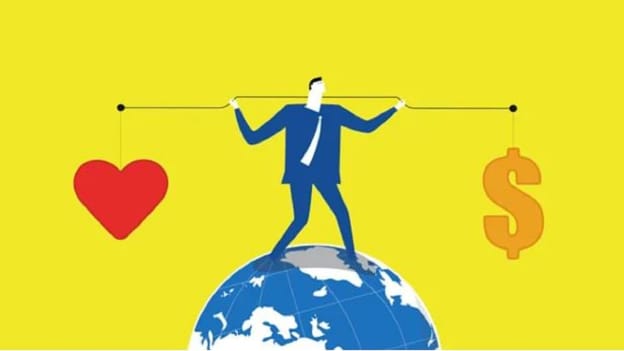Biggest wellness trends for 2020

In today’s fast and complex life, wellness and wellbeing are becoming crucial to organizational productivity. Health and wellbeing are directly impacting employees’ productivity. Corporates are jumping onto the wellbeing bandwagon to ensure their people lead healthier, and more productive lives, both at work and outside. It is no surprise, that wellbeing has burgeoned into a $3.72 Tn industry (Global Wellness Institute). This is partly driven by the way modern employees look at wellbeing. For example, both Millennials and Generation Zs expect employers to invest in their health and wellbeing.
75 percent of professionals believe it is their employer’s responsibility to contribute to their health and wellbeing, ideally in part by providing wellness benefits to employees.
It is important for organizations, and HR professionals to understand that holistic wellbeing, and not merely one-dimensional wellness is essential to attract, engage and retain today’s and tomorrow’s workforce. Hence the shift from wellness, which focuses on mere health, to wellbeing, which has a more holistic connotation of health, happiness and success in life.
A brief flashback on how wellbeing has evolved
2019 saw an emerging tech-dominance in the wellbeing industry. Much has been written about the immense possibilities around Augmented Reality and Virtual Reality, Gamification, Artificial Intelligence, Employee-driven wellness portals, etc. Some of the key corporate-wellbeing landmarks of 2019 were:
A part of holistic benefits: The past decade saw a shift from wellness to holistic wellbeing i.e. inclusion of all aspects of mind and body into the wellbeing agenda. Wellbeing also became integrated into the benefits offerings, with companies incorporating wellbeing into their culture curation, employer branding, retention and productivity enhancement initiatives.
Unconventional and extended offerings: 2019 saw wellbeing being looked at in new light, extending to employees’ families and communities too. For example, inclusion of extended family members, or inclusion of the LGBTQ+ community was an unconventional milestone.
Focus on mental and emotional wellbeing: High stress levels hamper employee productivity and wellbeing. With the World Health Organization predicting that one in four people will be affected by mental or neurological disorders at some point in their lives, mental and emotional health took centre-stage in corporate wellness programs. From one-on-one counselling helplines, to meditation and yoga programs, helping employees cope with the stressors of a 24*7 work environment became important.
Social good programs: Companies created avenues for employees to develop a sense of purpose by giving back to society. Programs for volunteering time and services enthuse and engage young workers, and keep a sense of connection and meaning going on in their lives.
Fostering Financial Wellbeing: In-house financial counselling and financial planning seminars became institutionalized over time. 2019 saw more customization in the offerings, to cater to the diverse employee groups (multiple generations) and their distinct financial and life goals. Much more opportunity lies in this area, in the form of unconventional programs such as payday loans using alternative “currencies” like hours or vacation time, student loan pay-down assistance, financial concierge services etc.
These initiatives made wellbeing a key buzzword in employee engagement. As technology pervades our existence, further sophistication of wellbeing shall become a reality.
Opportunities for 2020
70 percent of employers believe they provide reasonable access to health and wellness benefits, while only 23% of employees agree.
The above statistics depicts the immense potential for corporates to deploy employee-friendly wellbeing programs.
Multi-dimensional Wellness: While 2019 and earlier saw the emergence of physical, social, mental, emotional, financial, and social wellbeing efforts, focus remained mainly on physical and emotional wellbeing. 2020 shall see expansion into broader dimensions of organizational and employee wellness. Corporates will also move beyond traditional offerings to unconventional ones such as mental health coverage, vacation time and tuition reimbursement.
Gamification: Physical fitness initiatives such as step-challenges became somewhat gamified in 2019, especially to drive the levels of motivation, challenges, and rewards. 2020 and onwards will see a step above, with the incorporation of real-life like experiences through gamified avenues. More and more fitness devices will be connected with gaming devices, offering employees data visualization and interactive features. One can expect AR and VR to become more mainstream.
AI-driven intelligent recommendations: Emerging technologies such as artificial intelligence and machine learning can help better predict the evolving employee needs. The advent of smart technologies in day-to-day life is reason enough- smart clothing will grab a 15.6% market share globally by 2020, while smart watches will take the lead by the end of this decade, accounting for 52% of the market worldwide. Our increasing dependence on such intelligent mechanisms shall reflect in the way we exercise, eat, sleep and even breathe! An intelligent robot or chatbot assistant can help corporates customize the wellbeing experience to each employee segment, creating a better user experience based on the employees’ preferences and wellness goals. HR must explore clean, sensible data related to employees’ lifestyle needs and wants, by developing data-expertise.
Digital Detoxification: Organizations are recognizing the need to disconnect, and reconnect-recharge-rejuvenate. To counter the stressors of an always-on work culture, progressive companies will increasingly promote and support strategies for switching off , such as digital detox retreats, and policies to discourage the use of email after-hours.
Employee-Driven wellbeing: True employee engagement starts from the employee, and accordingly, we will see a movement towards employee-created and employee-driven wellness programs. Organizations will institute wellness leaders, coaches, coordinators or consultants. Technologies such as wellness portals and devices will empower and equip employees to take the onus of their own wellbeing in their own hands i.e. self-driven wellbeing.
How companies can make wellness a priority
Corporate wellbeing must be made a priority in the top echelons of the organization, for wellness programs to garner the required attention and investment. HR leaders can start building a case for wellbeing with a yearly review of workplace wellness cultures, and assessing wellbeing as a talent magnet.
88 percent of professionals are more likely to recommend a company that supports their well-being.
Excerpts from the engagement pulse surveys can help understand the employee satisfaction levels, workforce motivators, changing demographics, and changing employee expectations. HR must utilize hard-core data and insighting from multiple sources- pulse surveys, formal and informal communications, focus-group conversations, etc. This data-driven approach can help build a relevant case for corporate wellbeing. It is an established fact that a relevant and sustainable wellbeing strategy contributes towards a favourable work culture. HR must focus on culture curation, by making wellbeing work in favour of both employee and employer.
Often, leadership is concerned about the actual Return on Investment of such programs. It is important to drive a mindset-shift, to encourage people to look at employee-wellbeing from a qualitative perspective. Evaluating the Value on Investment (VoI), along with the Return on Investment, can help organizations define business-specific wellness objectives which are aligned to the corporate growth objectives. Some quantitative metrics such as the potential for fewer sick days, less presenteeism, increased engagement etc. can be used to build leadership buy-in. HR must therefore, don the “business hat” to help businesses realize the real business benefits of investing in a robust Wellbeing Strategy. Wellbeing has the potential to drive talent engagement and retention, and thereby contribute to business success.

















